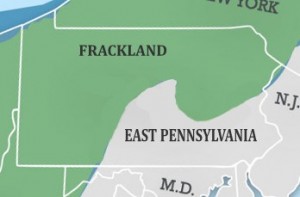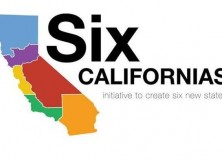 With an initiative approved to proceed that will attempt to carve up California, why wouldn’t more states try to carve out their problem areas, rather than fix them?
With an initiative approved to proceed that will attempt to carve up California, why wouldn’t more states try to carve out their problem areas, rather than fix them?
Tim Draper, a wealthy investor got approval to proceed with his campaign to carve up California into six separate states, according to the Secretary of State’s Office. Those opposed to the plan call it just another scheme for the wealthy to hoard tax dollars.
Draper’s initiative will require at least 807,615 petition signers, or 8 percent of the total votes cast in the 2010 gubernatorial elections, by July 18 to make it on to the November ballot.
Of course, everyone knows the dividing of California will never happen, even if an initiative does appear on the ballot. If it did, all the super-rich CEOs that control a large area of a state with their presence would try to start an initiative to carve out a separate state for themselves.
Pennsylvania, for example, could become two states. Frackland and East Pennsylvania, with Frackland being controlled by the oil and gas industry that funnels money toward getting their man elected to the office of Governor.
Which isn’t much different than the way it is for all of Pennsylvania, when you think about it.
While initiatives to split up America’s most populated state of California have been considered at different points in its statehood history, the Silicon Valley venture capitalist thinks he’ll be able to accomplish the feat.
Draper made his fortune investing in Internet startups, like Skype and Hotmail. He reasons that California is simply too populated and diverse to meet the needs of its diverse mixture of residents.
“Vast parts of our state are poorly served by a representative government dominated by a large number of elected representatives from a small part of our state, both geographically and economically,” his plan reads.
Draper’s multi-state initiative aims to carve up the state of some 38 million inhabitants into “six smaller state governments, while preserving the historical boundaries of the various counties, cities and towns.”
With the current structure, California is “ungovernable,” Draper stated to, USA Today.
“‘Six Californias’ allows a refresh,” he added.
What is obvious to everyone is that the bulk of the state’s wealth, located in the proposed state of Silicon Valley, is where you will find the most recognizable tech names, including Google and Facebook. In his new state of South California would be found Hollywood and the US entertainment industry. These two states would have the bulk of wealth from the now single state of California.
Jefferson, North California, West California and South California would be forced to fight over a dramatically reduced tax pie.
Tax haven California-style?
Instead of redressing the myriad problems now affecting the citizens of California, however, Draper believes carving up the state is the answer.
What is basically a plan that alleviates the richest from having to deal with the problems of the poorest, is touted by Draper as a solution for everyone – rich and poor alike – with the reasoning of a Queen Antoinette over starving peasants.
In a recent interview, the managing partner for Draper Fisher Jurvetson said California’s poorest regions “are not happy” because the system is “not working for them.”
“So if they had their own state, I believe all of those states would become wealthier. And I believe by managing their own state, they will become much more successful,” Draper told Time.
Draper’s plan encourages “regional cooperation,” the six-state scheme will also create competition between the states, which, according to the plan, “will lead to better and more responsive governance.”
That means that states with high-growth sectors, like the proposed state of Silicon Valley, which in 2012 ranked eighth in global GDP rankings, according to the Center for Continuing Study of the California Economy, and the state of Central California, home of Hollywood, would have an unfair advantage when it comes to the amount of tax revenue they receive.
Critics say the ‘Six Californias’ campaign is nothing more than a scheme for making sure that the taxes of wealthy individuals like Draper gets ‘redistributed’ inside their own affluent neighborhoods.
Though, it may not be all sunshine and rainbows for the tech state, if such a state should come into existence. Tech corporations are notoriously learned in the ways of avoiding paying corporate taxes.
The proposed initiative comes at a time when an increasing number of corporations – many of them from Silicon Valley – are able to take advantage of tax law loopholes, hiding their tax dollars overseas and completely avoiding the tax man.
The top 10 corporate tax avoiders happen to be tech companies:
1. Microsoft, $76.4 billion
2. IBM, $44.4 billion
3. Cisco Systems, $41.3 billion
4. Apple, $40.4 billion
5. Hewlett-Packard, $33.4 billion
6. Google, $33.3 billion
7. Oracle, $26.2 billion
8. Dell, $19.0 billion
9. Intel, $17.5 billion
10. Qualcomm, $16.4 billion
Source: Bloomberg, August 2013
Disclaimer: On January 4, 2016, the owner of WestEastonPA.com began serving on the West Easton Council following an election. Postings and all content found on this website are the opinions of Matthew A. Dees and may not necessarily represent the opinion of the governing body for The Borough of West Easton.







